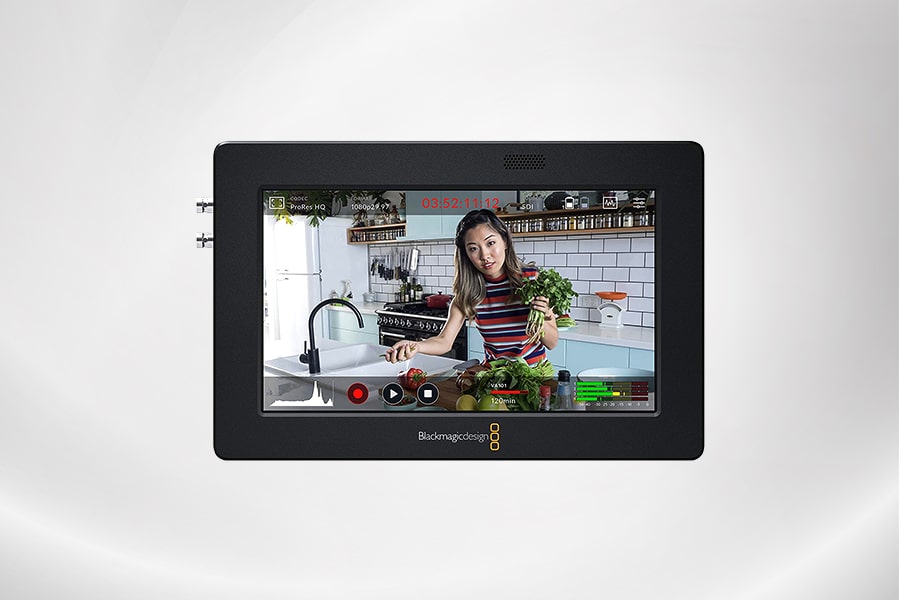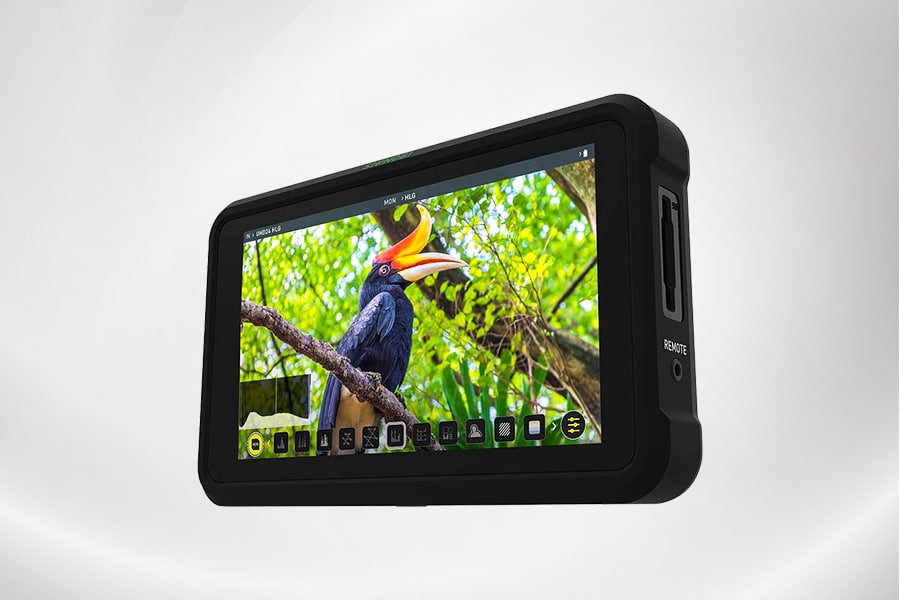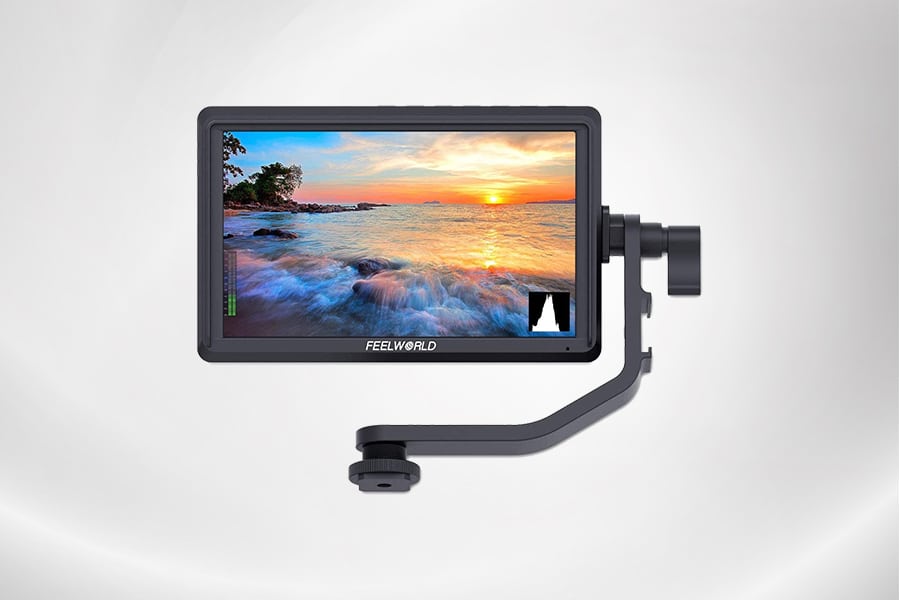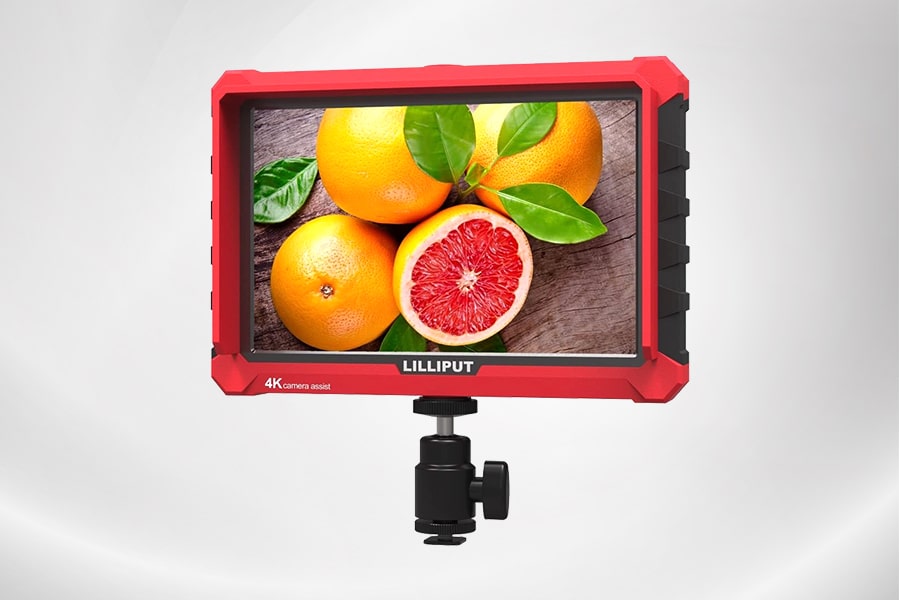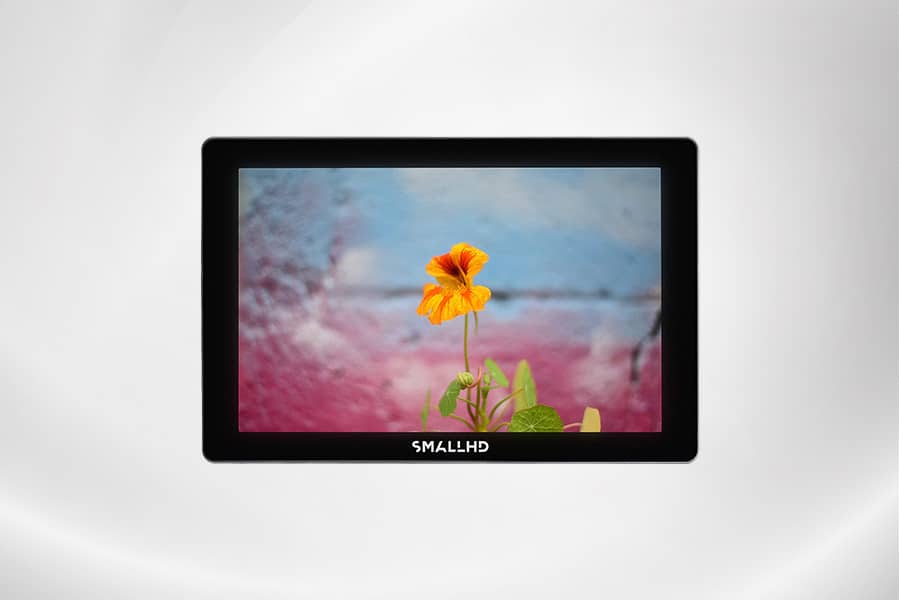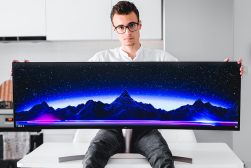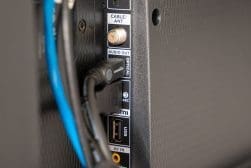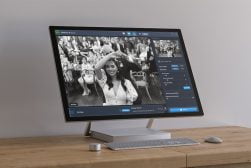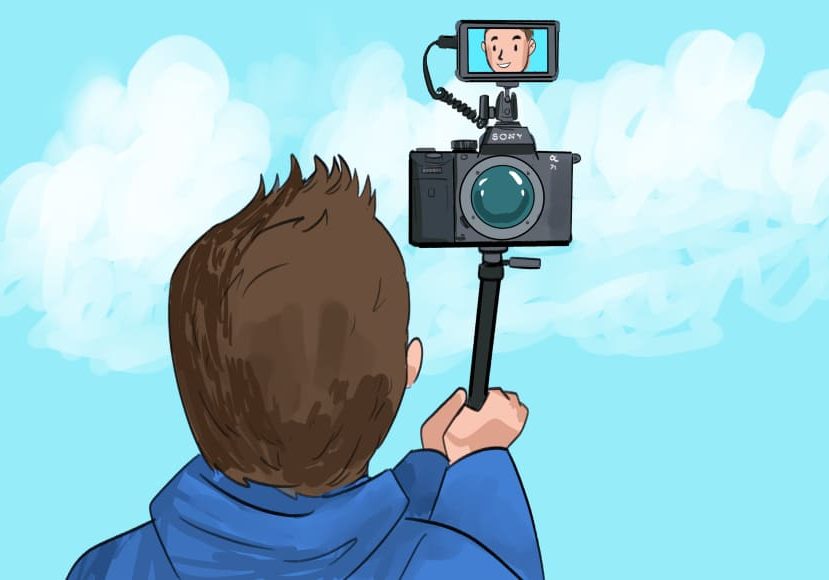
Best External Camera Screen Field Monitors to Make Shooting Video Easier
Enhance your video shooting experience with top-rated external camera screen field monitors, designed to make filming effortlessly precise and visually compelling.
If you’re a vlogger or content creator that needs to film yourself regularly, an external monitor is a useful accessory.
Whether your camera has a front-facing (articulating) LCD or not, an external camera screen helps you see a live preview with better fidelity and color calibration.
A large field monitor also helps when checking everything is in sharp focus, particularly when used in conjunction with mirrorless camera focus peaking.
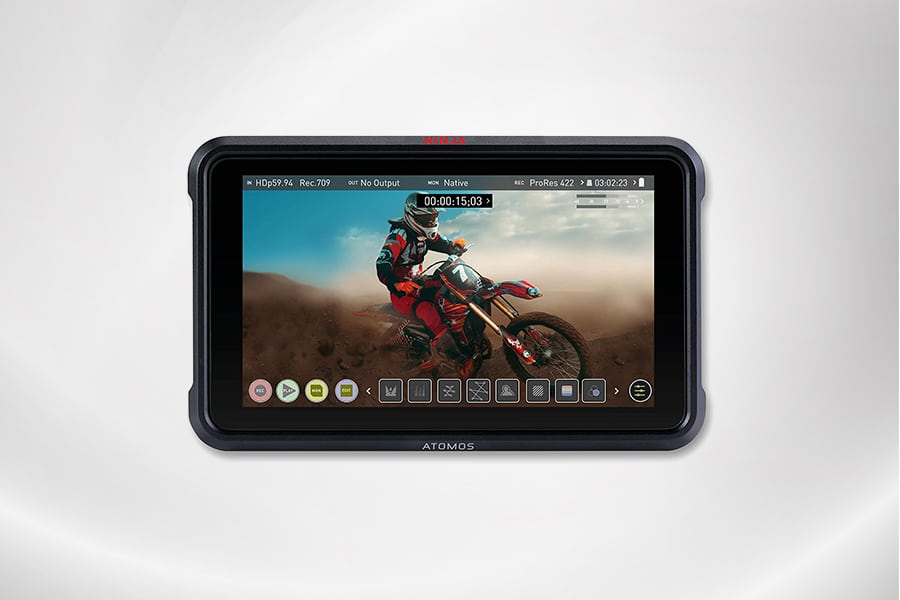
Exceptional image quality with professional monitoring capabilities all housed in a durable and good-looking unit.
If your camera outputs a clean HDMI feed, the best external monitors even allow you to record directly to a built-in SSD or memory card, maximizing image quality from both mirrorless cameras and DSLRs.
Other pro features include frame markers, LUT previewing, aspect ratio guides, highlight/shadow peaking, zoom in, HDR, false color, vectorscope, RGB parade and waveforms.
External camera screens can simplify and enhance your film recording experience, so let’s look at the best models of the year.
Best External Camera Monitors in 2024
| Image | Product | Features | |
|---|---|---|---|
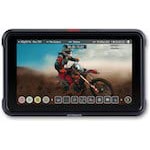 | Atomos Ninja VOUR #1 CHOICE |
| View Price → |
 | Blackmagic Design Video AssistHIGHLY RECOMMENDED |
| View Price → |
 | Atomos Shinobi |
| View Price → |
 | Feelworld FW568BEST BUDGET |
| View Price → |
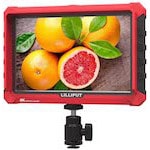 | Lilliput A7sGREAT VALUE |
| View Price → |
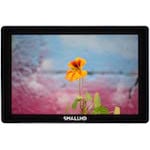 | SmallHD Indie |
| View Price → |
Atomos Ninja V
- Exceptional image quality
- Robust and durable build
- Professional monitoring capabilities
- Supports ProRes and ProRes Raw formats
- Requires additional accessories to work
Cooling fan can disrupt the audio recording
The Atomos Ninja V external monitor and recorder is an industry-leading model that offers the maximum bit rate and depth from your camera, ensuring the very best image quality, with the additional benefit of recording in ProRes Raw format.
With a 5-inch 16:9 touch screen at 427 pixels-per-inch, it features a brightness of 1000 nits, making it a smooth operator even when used in sunlight, maintaining a crisp, clear image.
There’s a wealth of customisable options, including luma waveform, vectorscope, and focus peaking, allowing users to really dig into the look and feel of the footage they shoot.
You can use the Ninja V to capture 4K footage in a selection of frame rates, and the screen is capable of displaying over 10 stops of dynamic range, with the ability to capture ProRes 4:2:2 raw video.
The codec options for the Atomos Ninja V external monitor are near-limitless, with Avid DNx and H. 265 available in addition to ProRes, with log formats including Arri Log, Clog, and Red Logfilm adding to its impressive versatility.
As a professional-level external recorder and monitor which blends a plethora of inputs and outputs with an exceptional picture, the Atomos Ninja V external monitor and recorder comes with our top recommendation.
Blackmagic Design Video Assist 3G
- Great quality 7-inch touch screen
- Supports all common SD/HD video formats
- Supports ProRes
- An affordable alternative to the 12G models
- The image could be brighter
- Quite expensive
Blackmagic has established itself as a manufacturer of some of the best semi-professional, consumer-friendly video cameras on the market, and their commitment to quality is present in their camera field monitor, the Design Video Assist 3G.
Sporting a roomy 7-inch screen with a resolution of 1920 x 1200, it supports a range of video formats and allows users to shoot in Ultra HD using dual high-speed recorders.
This Blackmagic monitor features a 3G-SDI and HDMI input, as well as two 3-pin mini-XLR inputs with 48V phantom power support for excellent audio recording, while the two included SD card slots make continuous recording possible by giving you the option to swap out cards on the fly.
The touch screen comes with a good selection of options to tweak and refine footage, from false colour, frame guides, focus peaking and focus assist, and zebra, with additional LUTs assisting with further refinement of the picture’s desired colour.
The Blackmagic Design Video Assist 3G, like the Atomos Ninja V, also supports recording in 10-bit Apple ProRes and Avid DNx, so if you have a higher-end camera you’ll get the best possible quality to work with.
With its larger screen, extensive customization tools, and multi-format support, the Blackmagic Design Video Assist 3G is one of the best external camera monitors you can buy.
Atomos Shinobi
- A great lightweight and easy to use monitor
- High level of brightness
- Includes waveform and LUTs support
- An excellent budget-friendly version of the Atomos Ninja V
- Can’t be used as an external recorder
- Not suitable for high-end professional cameras
Returning again to Atomos for their pared-down and budget-friendly alternative to the Ninja V camera monitor screen, the Atomos Shinobi, which sacrifices recording capabilities and some professional features, but keeps the overall high production standards of its bigger brother.
Many of the great features you get with the Ninja V are present and correct on the Shinobi, including the numerous monitoring tools you can use to help refine your image, including LUT and HDR support, which is rare to find on a monitor in this price range.
It even includes a new tool you won’t find on the Ninja V, the Analysis feature, which allows you to see what you’re shooting and view the waveform, histogram, and vectorscope without them covering the image.
All of these features are easily accessible via the intuitive and responsive menu system, which is designed to give you access to most tools in no more than two taps of the touch screen.
If you find the Atomos Ninja V appealing but want to save money and don’t mind sacrificing the ability to record, the Atomos Shinobi is an excellent quality field monitor that is ideal for vloggers, videographers, and other creatives.
Feelworld FW568
- Excellent value for money
- Very easy to use
- HDMI 4K Input & Loop-Through Output
- Comes with a sunshade for shooting in bright sunlight
- Unit construction is on the flimsy side
- Isn’t a touch screen
The Feelworld FW568 field monitor brings many of the core features of high-end field monitors to the table, but at a considerably lower price point, allowing amateur videographers to up their game when shooting video without spending too much money.
Featuring a 1920 x 1080 high-resolution 5.5-inch screen, it’s compatible with a wide range of DSLR cameras, and includes three fast keys for quick operation and a compact, lightweight build for ease of carrying.
The range of tools included is impressive, with waveform and 3D LUT available via the USB interface support, as well as other useful tools such as brightness histogram, peak focus assist, zebra exposure, and false colours.
While the Feelworld FW568 doesn’t come with a touch screen, it’s a small sacrifice considering the price, while the flexible installation makes it easy to set up on cameras and gimbals.
With over a thousand 5-star reviews on Amazon, the Feelworld FW568 monitor is hands down the best budget external camera screen you can buy, perfect for budding amateurs who want to expand their videography horizons without breaking the bank. This Feelworld monitor could be a game changer for beginner videographers and filmmakers.
Liliput A7s
-
- Excellent value for money
The 7-inch screen is great for general use
Nice selection of auxiliary functions
Rapid boot time
-
- The internal speaker is weak
Consumes power quickly
Another excellent budget external camera screen for amateur enthusiasts is the Liliput A7S, which sports a larger screen than the Feelworld FW568, coming in at 7-inches, and presenting images at Full HD 1920 x 1200.
Using an HDMI 1.4 connection that supports 4K UHD 30 FPS, the screen is capable of 500 nit brightness, with a loop-through function also included to allow you to output the signal to other compatible devices.
The true HD 1080p image is impressive, with little to no ghosting when panning the camera, ably adapting 4K while maintaining a decent level of accuracy to the image.
While it lacks the extensive customisation tools in more expensive field monitors, there are some handy tools here for beginners to work with, including false colour, pixel zoom, peaking, and focus assists.
Don’t be put off by the low price of the Liliput A7S – as entry-level external camera monitors go, this is exceptional value for money with enough features and tools to deliver a flexible operating experience when shooting video with DSLRs.
SmallHD Indie
- Premium level picture quality
- Excellent customisable software
- Expanded camera control with RED DSMC2 & KOMODO cameras
- Ideal for those who want to go pro
- Expensive
- Perhaps too advanced for beginners
The SmallHD Indie monitor is one geared towards more experienced videographers, combining a raft of internal imaging assistance tools with a crisp full HD IPS LCD touch screen, and an excellent workflow.
The monitor’s PageOS 4 software toolset ensures rapid and accurate performance, whether you’re utilising the 3D LUT overlays, working with focus assist and exposure assist, or making the most of the Teradek RT overlays.
Widely used by indie filmmakers and cinematographers, the SmallHD Indie monitor’s software can help you to achieve professional-level colour-grading on the fly, shooting striking footage which will capture the best characteristics of your chosen camera.
Fully compatible with 4K and HDR, it offers 10-bit colour processing in 100% Rec 709, while the 1000 nits of brightness will keep the monitor image visible in most light conditions.
If you’re looking for an on-camera monitor that allows you to use the touch screen in a central command hub, the SmallHD Indie has software upgrades that allow you to access the internal configuration settings of RED DSMC2 & KOMODO cameras.
The SmallHD Indie external camera monitor for cameras is on the advanced end of the spectrum and doesn’t come cheap, but it’s a solid choice for semi-professional and professional videographers using professional cameras, who require a smooth workflow and excellent quality images.
How to Choose an External Monitor
There are several important factors to consider before you invest in an external camera screen. These are:
- Compatibility with your camera
- Resolution and screen size
- Brightness
- Waveforms, HDR, and LUTs
- Monitor and recorder combos
Let’s take a look at each of these considerations in more detail.
Understanding your camera’s connectivity
Before you decide which external monitor is the right one for you, you need to make sure it’s compatible with the video camera you’re using.
Simply put, if you’re not able to output video from your camera, you won’t be able to use an external monitor.
If your camera is able to output video, you’ll need to check the specifications to verify which connectors you can use with it.
The most common connectors are SDI and HDMI, with additional proprietary connections available with the use of an adapter.
Make sure you choose the connector capable of outputting footage from your camera at the best possible resolution and frame rate so that the external camera monitor image is a true representation of the subject you’re shooting.
Resolution and screen size
External monitors are available in a variety of resolutions, the higher the resolution, the sharper and more detailed the image.
When choosing the right external camera screen for your needs, you’ll first need to check the resolution output of your camera to make sure the monitor supports it.
If you’re shooting in 4K resolution, you’ll need to select a monitor which is capable of correctly down-scaling to full HD and supports the ability to zoom in to 100%, so you can properly check the focus.
If you opt for one of the smaller on-camera monitors, you can get away with a lower resolution on account of the denser pixels creating the impression of a sharper image.
For larger screens, for example, screens in the 5″ to 9″ range, choosing one which outputs images in full HD is preferable.
Brightness
The brightness level of external monitors is self-explanatory: this relates to how bright you can make the image.
The important thing to consider when assessing the brightness of an on-camera monitor is the light conditions you plan on shooting in, especially if you intend to shoot footage outdoors with plenty of sunlight.
In these circumstances, the ability to ramp up the brightness level makes it easier to view the images on the monitor in bright sunlight.
Some monitors are marketed as “daylight viewable”, delivering up to 1000 cd/m2 (nit) brightness, so image reproduction remains clear even when viewing the camera monitor in direct sunlight.
A cheaper alternative is to invest in a hood for the monitor, although these can have only limited effectiveness if it’s a particularly bright and sunny day.
Waveforms, HDR, and LUTs
Some of the best on-camera monitors come with a selection of more advanced monitoring tools to help you create truly professional images.
A waveform monitor, often used on professional cameras to assist with calibration, can be used to visualise the image signal and assist with exposure and focus.
It’s also a useful tool for checking the colour gamut, assisting with colour correction and other image calibration techniques.
The rapid adoption of HDR (high dynamic range) cameras and devices means you may need to invest in an HDR-compatible camera monitor if your camera records in this format.
While this isn’t essential, monitors that can receive HDR will deliver a more vibrant image, but bear in mind this feature could significantly increase the cost of the monitor.
Finally, camera monitors with LUTs (Look-Up Tables) allow the operator to view images in a range of tonal grades and transitions, and are the most important of the advanced monitoring tools we’re covering here.
While common log profiles are usually included as default settings in most external screens, the higher-end models will allow users to upload custom LUTs and turn them on and off while shooting.
This gives a degree of flexibility that allows you to check exposure and colour on the fly, ensuring the images are close to how you want them to come out in post-production.
Monitor and recorder combos
Some external camera monitors come with the option of built-in recording, which allows you to save footage to storage outside of the camera itself.
Whether you’re using SDI or HDMI output, this not only helps you save on the camera’s internal storage space, it also circumnavigates the camera’s processing capabilities and allows you to save uncompressed footage at higher bit depths.
This feature is also worth considering if your camera is capable of outputting in raw outputs, for instance, ProRes RAW, which will require a compatible camera monitor.
Be aware that raw video output can require additional firmware, so make sure you check the requirements of your camera to verify compatibility.
How can I use my phone as an external monitor?
If you’re unsure which external camera monitor to go for, you can use your Android smartphone to perform the same role, connecting your camera to the phone so you can view and record the footage received.
To use your phone as an external monitor:
- Connect the camera to your phone. For example, this can be achieved by using a Micro HDMI to HDMI cable, with an HDMI to USB capture card, along with a USB-A to USB-C cable.
- Mount the phone to the camera’s hotshoe. This will require a camera hotshoe with a standard tripod screw adapter suitable for your phone, and a phone tripod mount.
- Install the USB camera pro application. You can get a free version of the app from Google Play Store, which allows for a range of video format options, including 4K H.264 video recording.
While this configuration doesn’t allow you to record 10-bit video, and you may experience some dropped frames on older phones, it’s an effective workaround for those unable to afford a dedicated external camera screen.
Final Words
The best camera monitors help free up videographers from the constraints of their camera, creating more dynamic, expressive, and free-flowing video footage.
Whether you’re an amateur enthusiast who’s just starting their videography journey or a seasoned pro who wants to upgrade their field monitor to something compatible with the latest technology, there’s a monitor to suit all budgets and requirements.
If there’s an external camera screen you recommend we haven’t mentioned, or you have any questions or concerns, leave a comment below!

Exceptional image quality with professional monitoring capabilities all housed in a durable and good-looking unit.





